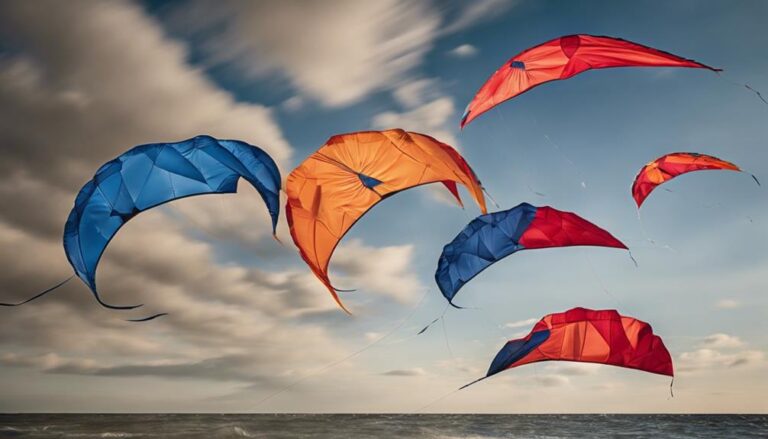Imagine you’re at the beach, watching someone effortlessly control a stunt kite, executing precise turns and dives. It’s a skillful display that piques your interest, but you’re also aware of the powerful pull of nearby power kites, soaring high and pulling their flyers across the sand.
Choosing between these two types of kites depends on what you’re after the finesse and agility of stunt flying or the raw power and speed that power kites offer. You’ll need to consider your own experience level and what kind of thrill you’re seeking.
Stick around to uncover expert tips that will guide you in making an informed decision that ensures your kite flying experience is both exhilarating and rewarding.
Contents
Understanding Stunt Kites
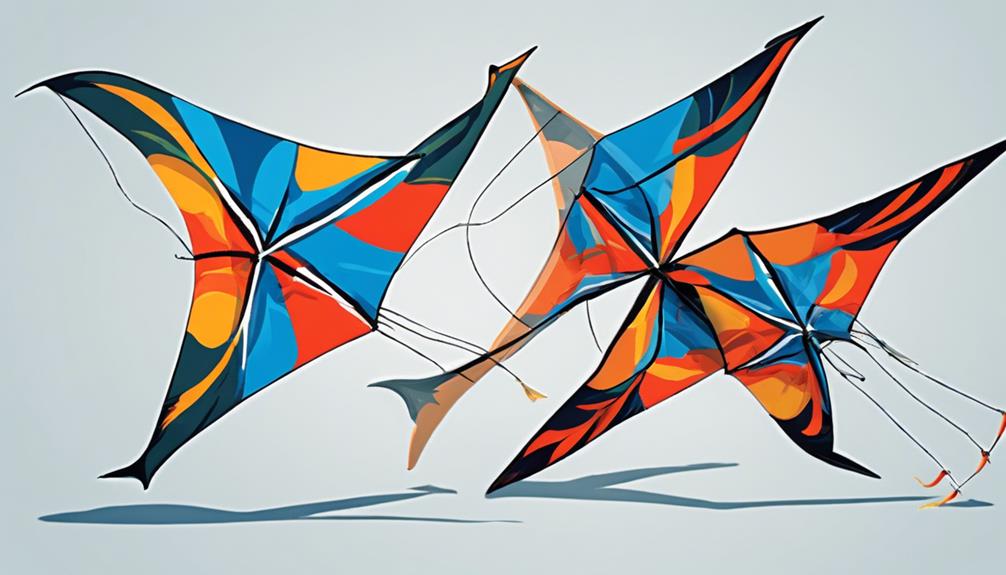
Stunt kites demand a higher level of skill and agility from you, making them more challenging to maneuver than their single-line counterparts. When you’re venturing into the world of stunt kites, you’ll find that quad-line stunt kites offer unparalleled control.
This unique flying experience allows for precise movements, but it also means you need to sharpen your skills.
For beginners, starting with a dual-line kite is advisable. These kites aren’t only easier to control but also provide a solid foundation in kite flying techniques. Models like the Beetle or Addiction are recommended for their durability and beginner-friendly design.
As you progress, your ability to maneuver these kites with finesse will greatly improve, preparing you for the more complex quad line stunt kites.
Exploring Power Kites
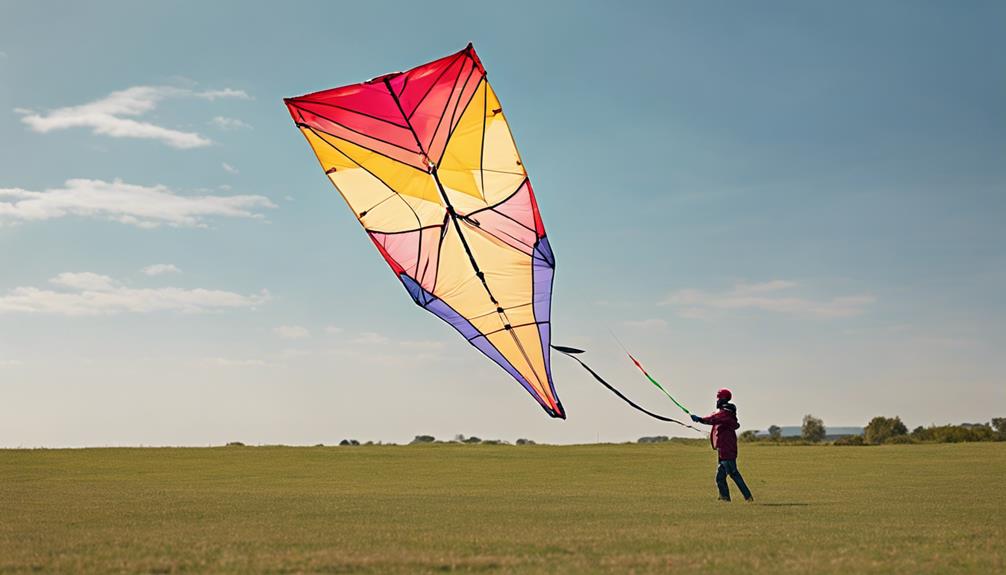
When venturing into the world of power kites, you’ll need to grasp the fundamentals, select the right model, and adhere to safety and maintenance guidelines.
Understanding the basics ensures you’re equipped with the knowledge to harness wind power effectively. Choosing the appropriate size and type, such as foil kites for their efficient power, is crucial for your control and safety.
Power Kite Basics
Delving into the world of power kites, you’ll discover they’re engineered to masterfully harness the wind’s energy for various thrilling traction sports. Known as traction kites, these high-performance tools come in two to four-line configurations, with quad-line kites offering superior control through a control bar.
Foil kites, a prevalent type, boast an airfoil design that efficiently captures wind, catering to activities like kite landboarding, snow kiting, and buggy kiting.
Their wind range is expansive, allowing for a versatile and dynamic learning experience. However, the power generated by larger sizes necessitates strict adherence to safety measures.
Proper training is essential to manage their strength and to navigate the exhilarating world of power kites safely.
Choosing the Right Model
In selecting the ideal power kite, it’s crucial to consider your skill level and the specific activities you aim to pursue. Power kites, larger in size and designed for generating significant power, require a keen understanding of wind dynamics and control.
Controlled by 3-4 lines and often maneuvered using a bar or handles, they harness wind energy for traction, suitable for land or snow activities.
For beginners, starting with a kite size ranging between 2 to 3.5 square meters is advisable to balance power and manageability.
This size range aids in developing control skills while ensuring safety. Always seek instruction as a novice; it’s essential for skill development and understanding how to harness the kite’s power safely.
Safety and Maintenance Tips
Having chosen the right power kite, it’s crucial to focus on keeping it in top condition and flying safely. Power kiting demands adherence to maintenance and safety precautions to avoid accidents and enhance longevity. Here are essential tips:
- Regular Inspection: Before and after each use, inspect your kite’s lines, bridles, and surface. Look for any signs of wear or damage that could compromise safety or performance.
- Proper Storage: Store your kites in a dry, cool place away from direct sunlight. This prevents material degradation and maintains kite performance.
- Follow Manufacturer Guidelines: Always stick to the setup, flying, and storage instructions provided by the manufacturer. Utilizing kite killers and safety leashes when flying enhances safety.
Adhering to these practices ensures your power-kiting experience remains thrilling and safe.
Key Differences Highlighted
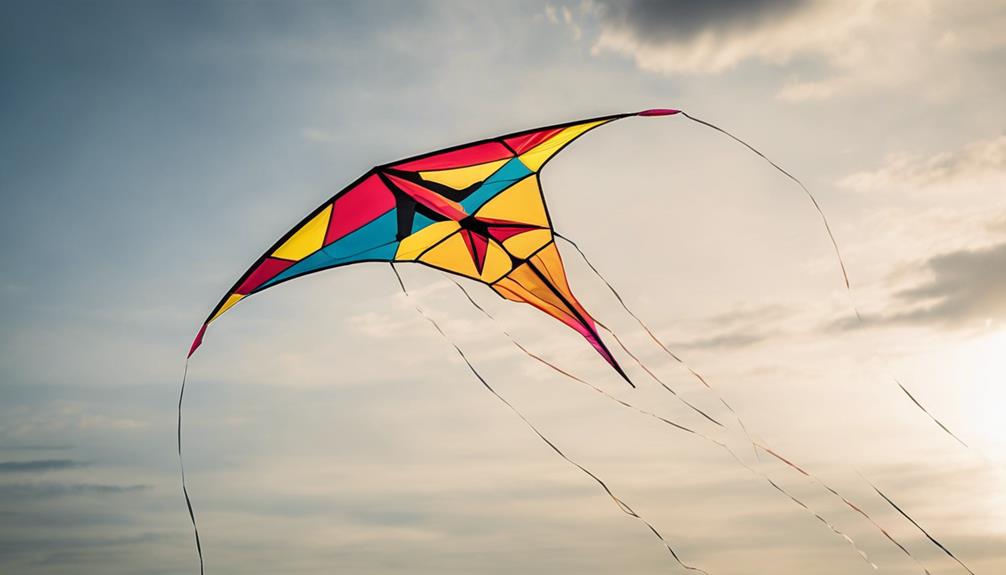
As you consider your options between stunt and power kites, it’s crucial to understand their key differences.
Stunt kites thrive on finesse and agility, requiring a hands-on approach for acrobatic maneuvers, while power kites leverage their larger size for impressive pull, making them ideal for activities like kiteboarding.
Knowing these distinctions in size, control complexity, and intended use will guide you in choosing the kite that best matches your adventure.
Size and Power Variations
When choosing between stunt and power kites, it’s crucial to understand that power kites are typically larger, ranging from 2 to 3.5 square meters, to harness wind for traction activities, while stunt kites are smaller, prioritizing agility for acrobatic flying.
Here are three key points to consider:
- Size Range: Power kites’ larger size range is designed to maximize wind power for traction, whereas stunt kites’ smaller size enhances maneuverability and control.
- Maneuverability vs. Traction: Stunt kites excel in agility and acrobatic flying, focusing on precise control. In contrast, power kites aim to generate significant traction for activities like kiting on land or snow.
- Agility for Acrobatic Flying: Stunt kites are specifically designed for performing intricate maneuvers and tricks in the air, offering unparalleled agility.
Flight Control Complexity
Understanding the differences in flight control complexity between stunt and power kites is essential for selecting the right kite for your flying ambitions.
When flying a stunt kite, you’re engaging in an active dance of precise control and agility, mastering intricate maneuvers with dual or quad-line setups. This requires a deep understanding of trick sequences and the ability to execute quick turns and spins.
On the other hand, power kites demand proficiency in power management and speed control, focusing on generating significant pull for traction activities like kiteboarding or landboarding.
While stunt kites offer a dynamic flying experience centered on acrobatic displays, power kites excel in power generation for traction sports, necessitating a keen grasp of safety considerations and power management.
Usage and Application Differences
Diving into the core differences, stunt kites cater to enthusiasts seeking precision and acrobatics, while power kites appeal to those looking for intense speed and pull-in activities like kiteboarding.
- Control Mechanisms: Stunt kites often utilize dual lines for intricate control, enabling sharp turns and complex maneuvers. Power kites, especially models like the Revolution quad line or other four-line kites, offer robust control over power and direction, ideal for harnessing wind conditions effectively.
- Size and Power: Power kites are generally larger, designed to catch more wind and generate significant pull, contrasting with the more manageable size of stunt kites tailored for acrobatics and precision flying.
- Skill and Agility: Mastering stunt kites requires high skill levels to execute precise maneuvers, whereas power kites demand an understanding of wind dynamics and kite control to manage their immense power safely.
Choosing Based on Experience
Your kite-flying journey, whether you’re a novice or seasoned flyer, greatly influences the choice between stunt and power kites. Beginners are often encouraged to start with stunt kites. These are ideal for skill development and enhancing agility, offering precise control for acrobatic flying experiences.
On the other hand, experienced flyers may gravitate towards power kites. These larger kites are designed to harness significant wind power, ideal for traction activities and generating exhilarating power.
Ultimately, selecting between a stunt kite and a power kite boils down to personal preferences and flying goals. Whether you’re aiming to master control and agility with a stunt kite or seeking the thrill of power generation with a power kite, your experience level plays a crucial role in making the right choice.
Maintenance and Care Tips
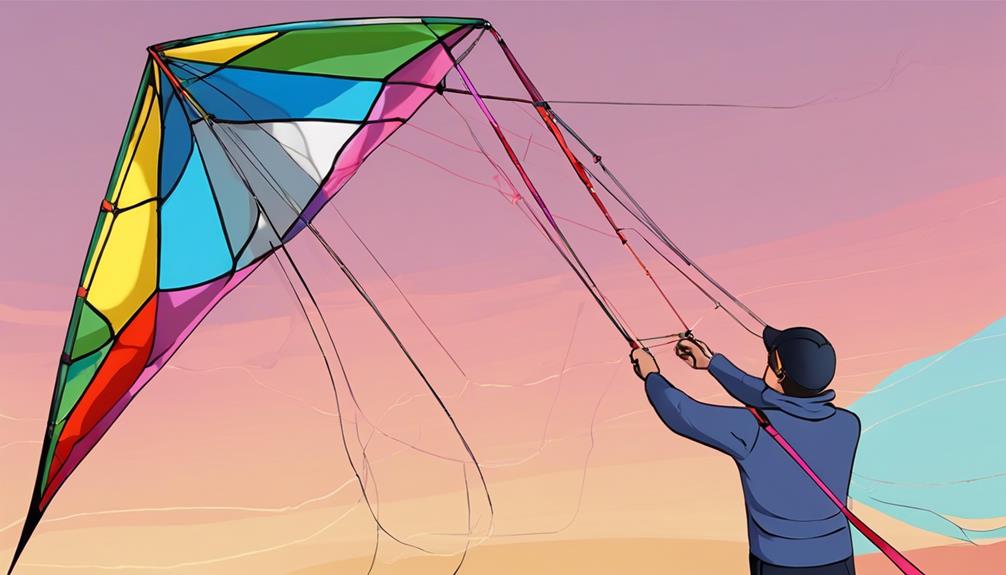
Maintaining your kite’s peak performance requires regular inspection and care, from checking lines for wear to storing it properly after every use. To ensure you can fly with confidence and maximize your kite flying experience, follow these essential tips:
- Inspect your kite lines frequently for any signs of wear and tear. Damaged lines can significantly affect your control and the kite’s response to your commands, especially when dealing with varying kite sizes and flying in rough conditions.
- Store your kite in a dry, cool place away from direct sunlight. This precaution prevents material degradation and ensures your kite remains in top condition.
- Clean your kite with mild soap and water after outings. Dirt and debris can hinder performance, making this step crucial for maintenance.
Must-Have Accessories
After ensuring your kite is in top shape with regular maintenance, it’s crucial to equip yourself with the right accessories for an enhanced flying experience. Here’s a list of must-have accessories for flying power kites:
| Accessory | Purpose | Benefit |
|---|---|---|
| Kite killers | Immediate depower of kites | Enhanced control and safety |
| Safety leashes | Securing kite during flight | Safety and control |
| Harnesses | Comfort and control during flight | Improved experience |
| Ground stakes | Secure kites when not in use | Optimal performance |
| Wind meters | Assess wind conditions | Suitable flying conditions |
| Repair kits | Fix minor damages | Prolong kite lifespan |
These accessories ensure you enjoy a safe and controlled flying experience with your power kites.
Conclusion
In conclusion, whether you’re eyeing stunt kites for their agility and challenge, or power kites for their intense force, it’s crucial to align your choice with your skill level and flying ambitions.
Start with stunt kites if you’re new, then possibly move up to power kites as you gain confidence.
Don’t forget about maintenance and the right accessories to enhance your experience.
Ultimately, listening to your preferences and gradually building your skills will ensure a thrilling kite flying journey.

